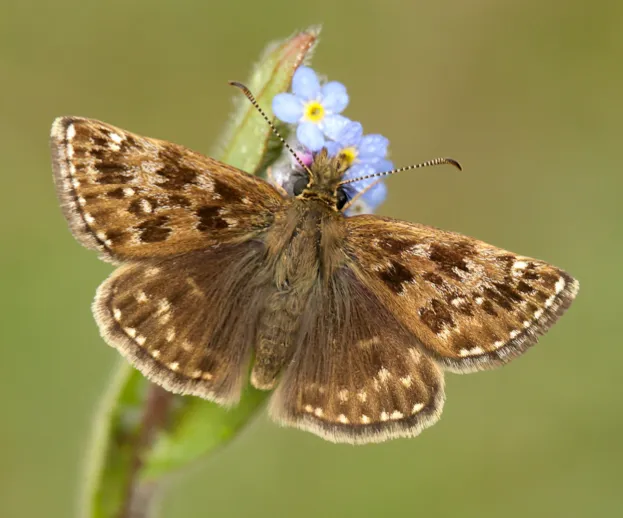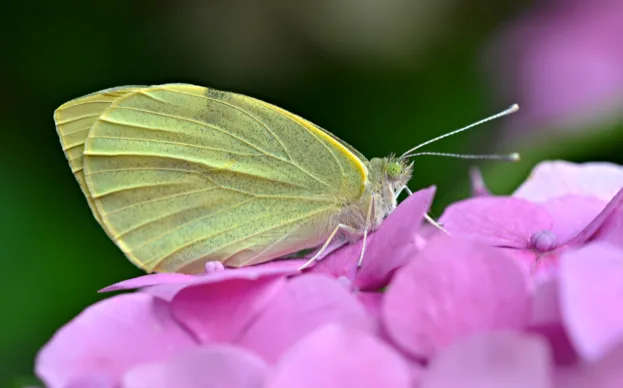The grizzled skipper suffered its worst year on record © Mark Searle / Butterfly Conservation
Two of Britain’s declining butterfly species suffered their worst year on record in 2017, following a cold spring and a gloomy, wet summer.
Despite hopes their populations would improve after a terrible 2016 for UK butterflies, the grayling and grizzled skipper recorded their lowest numbers since records began in 1976.
“There is little comfort in these results for the UK’s hard-pressed butterflies,” says Butterfly Conservation’s Tom Brereton.
“On the positive side, there is much good conservation work happening across the country, which will aid any recovery should we get a helping hand with the weather.”
The UK Butterfly Monitoring Scheme is carried out annually by Butterfly Conservation, the Centre for Ecology & Hydrology (CEH), the British Trust for Ornithology, and Joint Nature Conservation Committee.
Grizzled skipper numbers were down nine per cent compared to 2016, and its population has more than halved since the 1970s.
Graylings also suffered a significant decline, with numbers down six per cent from 2016. Grayling numbers have decreased by 63 per cent over the last decade.
Another threatened species, the dingy skipper, saw an even bigger fall in numbers; a 22 per cent decline from 2016.

The dingy skipper declined by 22 per cent from 2016 to 2017 © Iain H Leach / Butterfly Conservation
'Cabbage whites' also suffered from a bad year in 2017. Numbers of large white butterflies decreased by 19 per cent, and the species is now in a state of long-term decline, while small white numbers dropped by 16 per cent.
The other common white butterfly white, the green-veined white, saw numbers fall by two per cent.

The large white butterfly is now in decline © Andrew Cooper / Butterfly Conservation
However, it wasn’t all bad news, as the red admiral saw a 76 per cent increase on 2016, and comma numbers rose by 91 per cent year on year.
It was also a great year for the rare white admiral, with a 157 per cent increase in their population being recorded.
“The weather can have a serious impact on individual species’ numbers each year as results from counts in 2017 show,” says CEH’s Marc Botham.
“However, populations can and do bounce back providing suitable habitat is available, and it is the long-terms trends, particularly the declines of a number of common and widespread species, which are of great concern.”